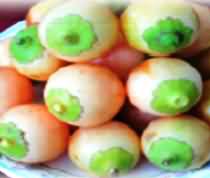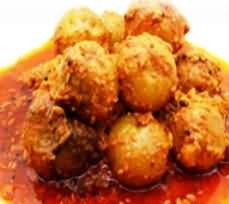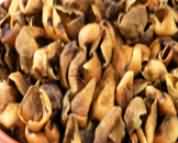लसोड़ा की फसल के औषधीय और पोषक गुण
The Indian cherry (Cordia myxa L.) is a popular tropical fruit crop in the Boraginaceae family. It is a multipurpose fruit tree species native to India's arid and semi-arid regions. It is known locally as lasora or gonda.
Cordia myxa is native to a region that stretches from the eastern Mediterranean to eastern India (Oudhia, 3). During the 16th century, the name cordia was given in honour of German botanist E. Cordes.
Lasoda is a tropical tree that grows untamed in the wild. The fruit is a drupe with a globular-ovoid shape, It's round and smooth, about the size of a cherry. When fully ripe, the pulp becomes practically transparent, tough, and viscid. The plant is a medium-sized tree that grows to a height of 8-10 meters.
It is commonly planted as a shelter belt along farm boundaries, but it is currently being produced as a planned orchard to maximise the value of its fruits throughout the summer season (March-April).
Its adaptation to poor soils, wastelands, and water stress tolerance makes it an ideal plant for desert ecosystems. The species is well-known for its nutrient-dense fruits as well as a wide range of uses for other plant parts.
Flower morphology
Around the subtropics, the Lasoda tree blooms in March. On the current season's growth, the inflorescence appears to be predominantly axillary. The flowers are hermaphrodite in nature and are white in colour. The florets are approximately 4-5mm in diameter.
During the months of May and June, the fruit of the lasoda tree begins to show. Its botanically is drupe. Its colour ranges from bright pale to brown or even pink. The pulp is transparent due to the presence of viscid adhesive, such as mucilage.
The pulp of ripe apples has a pleasant sweetness to it. In office work, the pulp from a half-ripe apple can even be used as a substitute for paper glue.
Importance of Lasoda
- Lasoda contains nutrients such as protein, crude fibre, carbohydrate, fat, iron, phosphorus, and calcium. Lasoda also has a lot of anti-inflammatory qualities.
- The seeds of the Lasoda fruit are highly effective in treating itching, scabies, and ringworm.
- Although high blood pressure is the most frequent ailment in the world, it is also cure such type of disease.
- Regular ingestion of blueberry, i.e. Lasoda, has been shown to relieve joint discomfort in arthritis sufferers.
- The fruit's mucilage is used to cure coughs and disorders of the chest, uterus, and urethra, among other things. It is used as a laxative in larger doses for bilious disorders.
- The bark decoction is used to treat dyspepsia and fevers.
- The fruit is eaten to help with indigestion and digestive strength.
- Pickles are prepared from the immature fruit, which is also used as vegetable fodder. The leaves make excellent fodder as well.
- Some people consider lasoda to be a medication, believing that the fruit can help with Joint discomfort, Cough, Asthma, Skin disease, Fever, Headache, Diarrhea, Intestinal worms, Wounds, and other ailments.



Uses of Lasoda
Pickles, churan, and greens are just a few of the ways the Lasoda fruit is used. The green unripe Lasoda fruit is used to make soups and pickles. It develops a pleasant flavour as it ripens and can be eaten fresh. Fruits and seeds are edible, while other portions are used for human and veterinary medicine, as well as vermifuge, fodder, and bird feeding.
Wood is used to make charcoal and furniture, as well as tools, sculptures, utensils, walking sticks, and arrows. The resin, gum, and latex of this plant are also beneficial. It serves a significant role in rituals in addition to these everyday goods. Green fruits are dried and stored for use when the season is not available.
Conclusion
Lasora, also known as Sabestan Plum, produces sweet-tasting mucilaginous fruits (drupes). The fruit's sticky white material can be removed and used as glue. Fruits can be consumed raw, dried, or pickled. Fruit is a good source of minerals, fibre, vitamins, and other antioxidants, as well as other critical elements. Skin illnesses, dropsy, dysentery, dyspepsia, cholera, and headache are among the ailments for which the fruits and other plant components are employed. The leaves are used for both medicinal and feed purposes. Wood is utilised in construction, agricultural implements, and other applications.
Reference
Anon. (1950). Lasoda (Cordia dichotoma), Wealth of India, Vol. II, CSIR, New Delhi, pp. 346-347.
Bhatnagar P., Singh J. and Meena C.B. (2016). Lasoda : That blooms on tree trunk : A report HortFlora Res. Spectrum, 5(2) : 175-176.
Oudhia, P. (2007). Cordia myxa L. [Internet] Record from PROTA4U. Schmelzer, G.H. & Gurib-Fakim, A. (Editors). PROTA (Plant Resources of Tropical Africa / Resources Végétales de l’Afrique tropicale), Wageningen, Netherlands www.prota.org.
Authors
Poonam1 , Rahul Singh Sikarwar2, Rahul SinghTomar3
1Ph.D. Scholar, Department of Horticulture, Rajmata Vijayaraje Scindia Krishi Vishwa Vidyalaya, Gwalior (M.P.)-474002, India
2P.G. Student, Department of Extension Education, R.A.K. College of Agriculture Sehore, R.V.S.K.V.V. Gwalior, (M.P.) India
3P.G. Student, Department of Extension Education, College of Agriculture Gwalior, R.V.S.K.V.V. Gwalior, (M. P.) India
Corresponding-Email:

